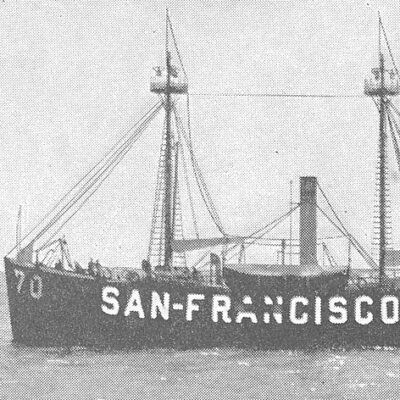
A telegraph operator employed by the San Francisco Call newspaper tapped out the terse message: “Sherman is sighted,” Aug. 23, 1899. The message announced the anxiously awaited return of the troopship of the same name from the Philippines after the Spanish-American War. Unlike every other telegram transmitted in the U.S. up to that time, this message did not flash along a telegraph line. Instead, it was wirelessly transmitted from Lightship 70, located 7 miles off the entrance to San Francisco Bay, and was the first wireless ship-to-shore telegraph message in U.S. history.
Following Lightship 70’s historic transmission off the coast of California, the U.S. Lighthouse Service was quick to see advantages in equipping all of its vessels with wireless. These advantages included early notification of vessel arrivals, reporting of weather observations and sea conditions, and summoning assistance for mariners in distress. The Lighthouse Service (later merged with the Coast Guard) soon installed wireless transmitters on board its lightships. Within two years of Lightship 70’s historic transmission, wireless sets had become standard on board all Lighthouse Service lightships.
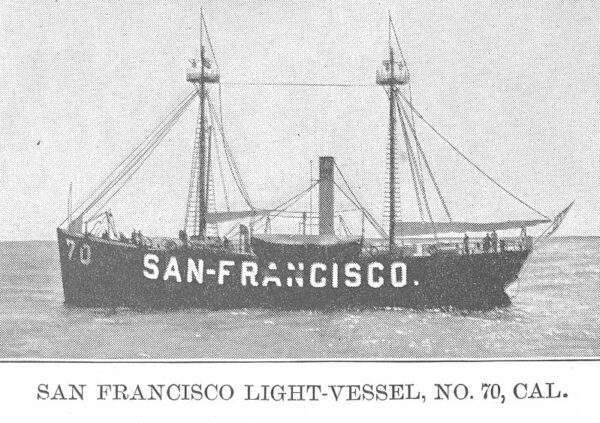
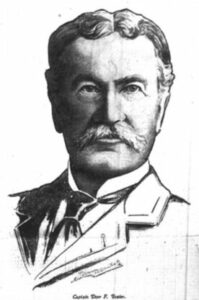
In addition to the Lighthouse Service, the U.S. Revenue Cutter Service took the initiative to harness radio technology for improved mission performance. In 1902, the U.S. Revenue Cutter Service—merged in 1915 with the U.S. Life-Saving Service to form the Coast Guard—also began experimenting with the use of wireless telegraph. However, it did so to coordinate its counterdrug and migrant interdiction operations in the Pacific Northwest.
The initial push by the Revenue Cutter Service to use wireless to combat maritime drug and human smuggling was championed by Capt. Dorr Tozier, commanding officer of the iron-hulled Revenue Cutter Grant, stationed at Port Townsend, Washington. Tozier hailed from Georgia, and he received his Revenue Cutter Service commission from Abraham Lincoln one month before the president’s assassination. Tozier served primarily on the East Coast before transferring west. He was best known for his vast collection of Native American artifacts from the Pacific Northwest as well as pioneering wireless telegraph for shipboard use.
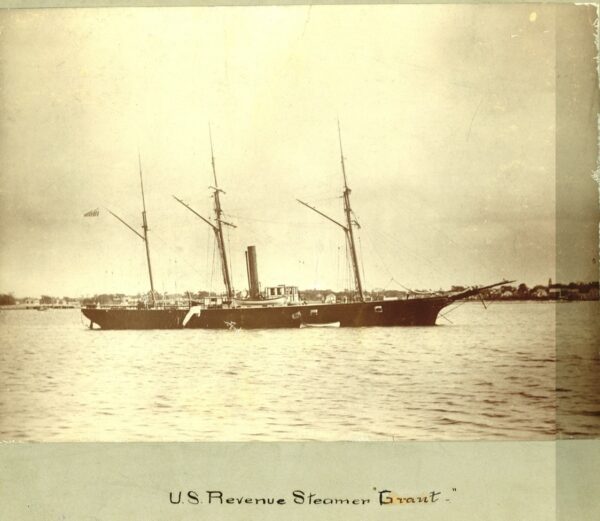
Tozier was responsible for combatting the maritime smuggling of opium and Chinese migrants from British Columbia to the Washington Territory in the early 1900s. To do so, he had a small flotilla consisting of his cutter—an old sail and steam-driven, three-masted schooner capable of nine knots—and the Guard and Scout, two 65-foot steam launches that could hit 15 knots. Opposing them were more than 40 fishing sloops out of Victoria, British Columbia, and most of the coastal steamers in the region—all of which were involved in smuggling at any given time.
While patrolling Puget Sound and nearby waters, Tozier often found himself in a hopeless stern-chase, with no way to make an intercept, or alert his faster steam launches stationed at nearby Port Townsend and Friday Harbor. Then, in November 1903, Tozier approached representatives of the newly opened Pacific Wireless Telegraphy Company in Port Townsend. Tozier proposed to test their equipment using wireless sets located on board his cutter and at the local customs house.
Tozier planned his new system together with the Pacific Wireless Company, Revenue Cutter Service, and the local customs collector. Pacific Wireless would install and operate wireless radio sets on board his cutter, at the Port Townsend Customs House and, several months later, at Friday Harbor on San Juan Island, Washington. There was no upfront cost to the government as long as Customs ensured that company revenues did not fall below $200 per month.
Tozier’s initial wireless tests proved successful, allowing the Grant to keep in contact with the Port Townsend Customs House throughout its patrol area—a 100-mile radius from the cutter’s homeport. After testing and adjustment of the new equipment, the Grant was ready for its first practical use of wireless for revenue cutter duties. On April 1, 1904, the Grant switched on its wireless set and began a new era of marine radio communication between ship and shore stations.
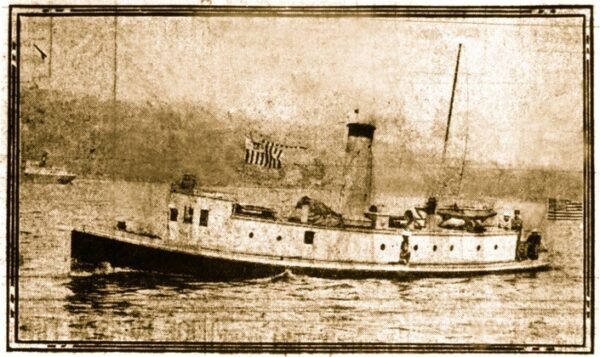
The new wireless radio technology proved very effective in directing revenue cutters and patrol boats in maritime interdiction operations. However, it took another three years to convince Congress of the importance of “radio” (which superseded the term “wireless telegraph” in 1906) to both its law enforcement and search-and-rescue missions. In March 1907, Congress finally appropriated the $35,000 needed to fund wireless installations on board 12 cruising cutters.
By 1909, the Revenue Cutter Service’s shipboard communications had essentially gone wireless. However, rapid advances in radio technology in later years resulted in the installation of non-standard equipment on board the cutter fleet. It took the advent of World War I to correct this situation. With the Coast Guard’s transfer to the Department of the Navy for the war, cutters were outfitted with the Navy’s standard radio communications package.
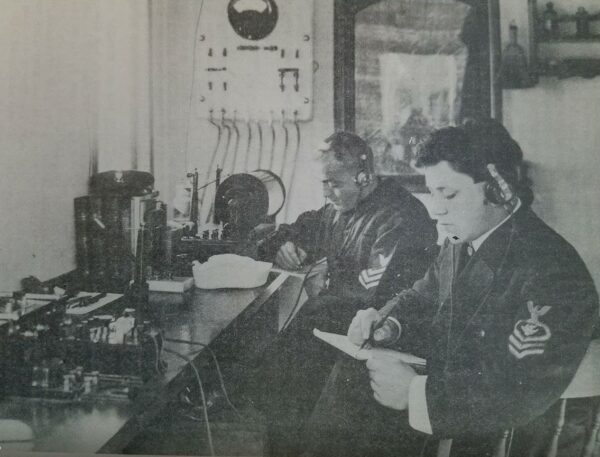
The wartime upgrade served the Coast Guard for a few years until Prohibition and the service’s dramatic fleet expansion. In 1923, only about a third of the Coast Guard’s 22 cruising cutters possessed even a rudimentary voice-radio or “radio telephone” capability in addition to its older radiotelegraph technology. In 1924, Coast Guard leadership foresaw a problem with the fleet of more than 200 smaller 75-foot patrol boats scheduled to be brought online in the next year-and-a-half. These smaller cutters would lack both the space and the number of men required to operate and maintain the large radiotelegraph equipment.
At the time, easy-to-install and-operate radio telephones did not exist. Therefore, the Coast Guard had to initiate a crash program with America’s nascent electronics industry to develop “small, compact radio telephone-telegraph transmitter-receiver equipment.” The resulting T-1, CGR-1 Standard Coast Guard Transmitter and Receiver proved very successful and was soon installed on board cutters, at shore stations, and on patrol boats. With upgrades, the T-1 radio remained in service until 1938.
Meanwhile, the 1925 addition of aircraft to the Coast Guard’s inventory created a new challenge for communications. Early aircraft had not been designed or constructed with radios in mind. Luckily, Coast Guard Lt. Cmdr. Elmer Stone, a pioneer in maritime aviation, devised specifications for an aviation radio set. With those specifications in mind, Radio Electrician A.G. Descoteaux and Chief Radioman R.H. Salvas exercised field-level initiative to develop a 90-pound battery-operated radio set. This set enabled Coast Guard aircraft to report vessel sightings in real time to nearby cutters and shore stations. This capability proved critical to successful surface vessel interdictions and, later, aviation rescues and interdictions.
The two Coast Guard predecessor agencies of the U.S. Lighthouse Service and the U.S. Revenue Cutter Service were quick to recognize the vital role radio could play in their operations. Over 100 years ago, the Coast Guard pioneered maritime electronic communications development through the foresight, diligence, and spirit of innovation demonstrated by their personnel, from deck-plate level to top leadership.
National Coast Guard Museum insider tip: Visitors will be able to learn more about the evolution of maritime electronic communications specifically on Deck 2 of the museum surrounding developments in search and rescue and risk management.
